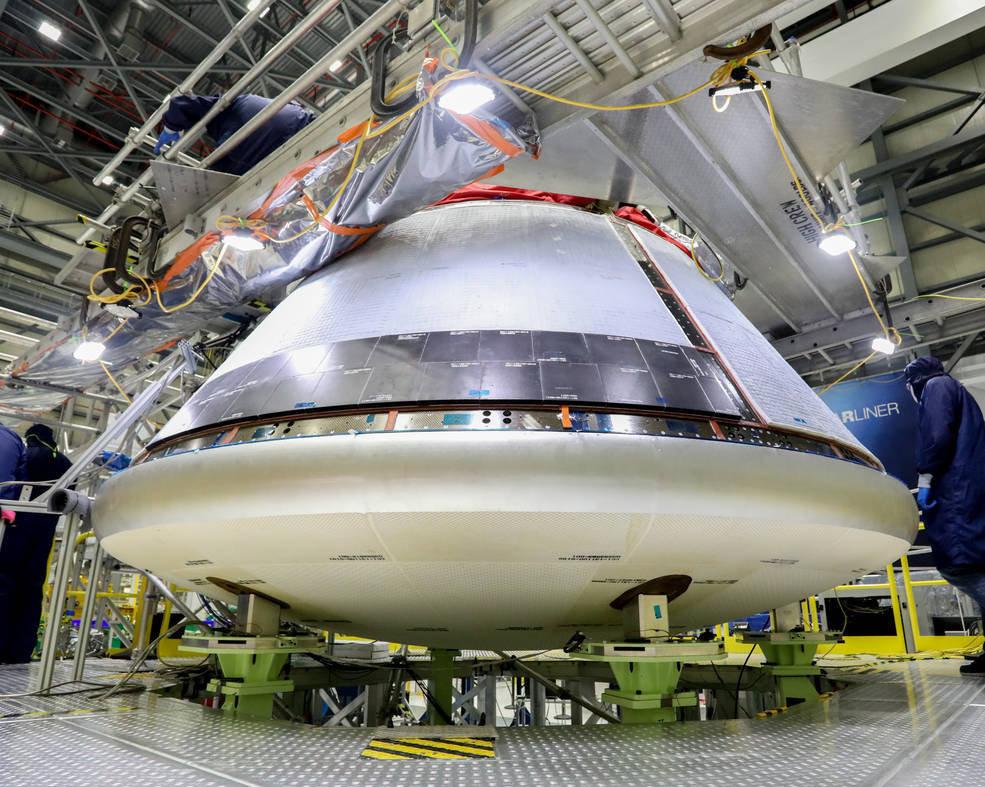As part of their commercial manned flight program, NASA and Boeing are currently planning a second unmanned flight test on the International Space Station. Orbital Flight Test-2 (OFT-2) is a key development milestone for the company to fly manned missions for NASA in the future.

Image source: Boeing
For the OFT-2 mission, the CST-100 starship will launch from the Space Launch Complex-41 at Cape Canaveral Air Force Base in Florida along with a Joint Launch Alliance Kineshin V rocket, which will then dock to the International Space Station and return to the ground in the western United States in about a week. The mission will be part of an end-to-end test to prove that the system is already capable of manned flight.
"Boeing has made steady progress on the road to the second unmanned test mission and in preparation for the 2021 crew flight test," said Kathy Lyders, deputy director of NASA's Board of Directors for Human Exploration and Operations Missions. ”
Image source: LiveScience
The OFT-2 Starship is about to be finalized at Boeing's commercial manned flight and cargo handling facility at NASA's Kennedy Space Center in Florida. The spacecraft's crew compartment (reusable) is energized and the final inspection of avionics, power and propulsion systems is nearing completion. The installation of the spacecraft's parachute, landing airbag, base insulation panel and its back shell marked the completion of the spacecraft's manufacturing phase. In the coming weeks, the team will load cargo in the crew compartment, including "Rossi the Rocketeer", and weigh the spacecraft before docking with the service module (the process is complete).
Meanwhile, Boeing technicians continue to renovate the crew module in the Starship's first orbital flight test, while building a new service module for NASA's Boeing Crew Flight Test (CFT) and planning to launch in the summer of 2021 after the successful completion of the OFT-2 mission.
NASA astronauts Barry ("Butch") Wilmer, Mike Finco, and Nicole Mann are continuing to train for the CFT, Starship's first manned flight. After the completion of both test flights, NASA astronauts Sunita Williams, Josh Cassada and Janet Epps will participate in the Starship-1 mission, the first of six manned rotation missions by NASA and Boeing and part of NASA's commercial manned flight program.
Image source: RocketSTEM
The Boeing Avionics and Software Integration Laboratory in Houston is also in the process of formally qualifying the Starship's flight software facility. Lab teams are conducting static and dynamic testing of the vehicle software facility to ensure that its instructions are written in line with the original design and meet all mission requirements. The test team will then use a set of high-fidelity hardware to perform the entire end-to-end mission scenario from docking and disengagement to landing before performing the OFT-2 mission.
"NASA and Boeing have done a lot of preparatory work on all aspects of the flight software, running a large number of cases through Boeing's high-fidelity simulation environment, including starship avionics," said Steve Stidge, NASA's commercial crew program manager.
Boeing has embarked on working hand in hand with NASA to begin solving all the problems found in the first flight of the Starship. Before Starship's second unmanned flight test, the company completed more than ninety percent of all the recommended actions — even those that were not mandatory — developed by a joint independent review panel of NASA and Boeing.
The Joint Launch Alliance is also making progress on the hardware infrastructure of the OFT-2 Dynasky V rocket at Cape Canaveral Air Force Base in Florida and is preparing for the upcoming OFT-2 launch. The centaur upper stage of the CFT has been completed, and all hardware for the CFT mission has been delivered to the launch site in early 2021 as planned. The hardware used to make the Starship-1 is in the process of being produced.
Image source: RocketRundown
John Walmer, vice president and project manager for Starship Plans at Boeing, said: "The progress we have made before Starship's next flight lays the foundation for NASA and a variety of customers for years to come to provide safe and reliable transportation services. As each ship finished, code line testing, and file transfers were completed, we proved that we had a sturdy, fully operational ship. It's really a team of NASA and our business partners working together. ”
Related knowledge
The Atlas V is a non-reusable launch vehicle developed by Lockheed Martin, currently developed by Lockheed Martin and Boeing, under the Joint Launch Alliance, and the Jet Company is responsible for the development and manufacture of the Solid Booster of the Cosmos 5 launch vehicle.
The first section of the booster is fueled by liquid oxygen and kerosene and built from the main base in Decatur, Alabama, with russian RD-180 rocket engines, the second section is a Centaurus rocket fueled by liquid oxygen and liquid hydrogen, some derivatives are equipped with bundled solid rocket boosters to increase the payload, and the booster and the first and second sections constitute the Cosmos 5 carrier rocket.
It is also one of the family members of the Cosmic God series of launch vehicles. The rocket fairings were partly made by RUAG Space and were mostly fairings with a diameter of 4 or 5 meters, although fairings with a diameter of 7.2 meters and a length of 32 meters were also listed in the original design. [4] The site was assembled by Dekay, Harlingen, San Diego, and Denver, the headquarters of the United Launch Alliance.
By October 2015, the Cosmos 5 carrier rocket had been launched more than 50 times, and its first voyage began in August 2002, and maintained a fairly perfect success rate. The only partial failure occurred on June 15, 2007, when the centaur rocket engine in the second section was shut down four seconds earlier due to an abnormal signal, preventing the satellite from reaching a higher orbit than intended, although the National Reconnaissance Bureau determined that the launch was still a success.
By Tabatha Thompson
FY as Celine